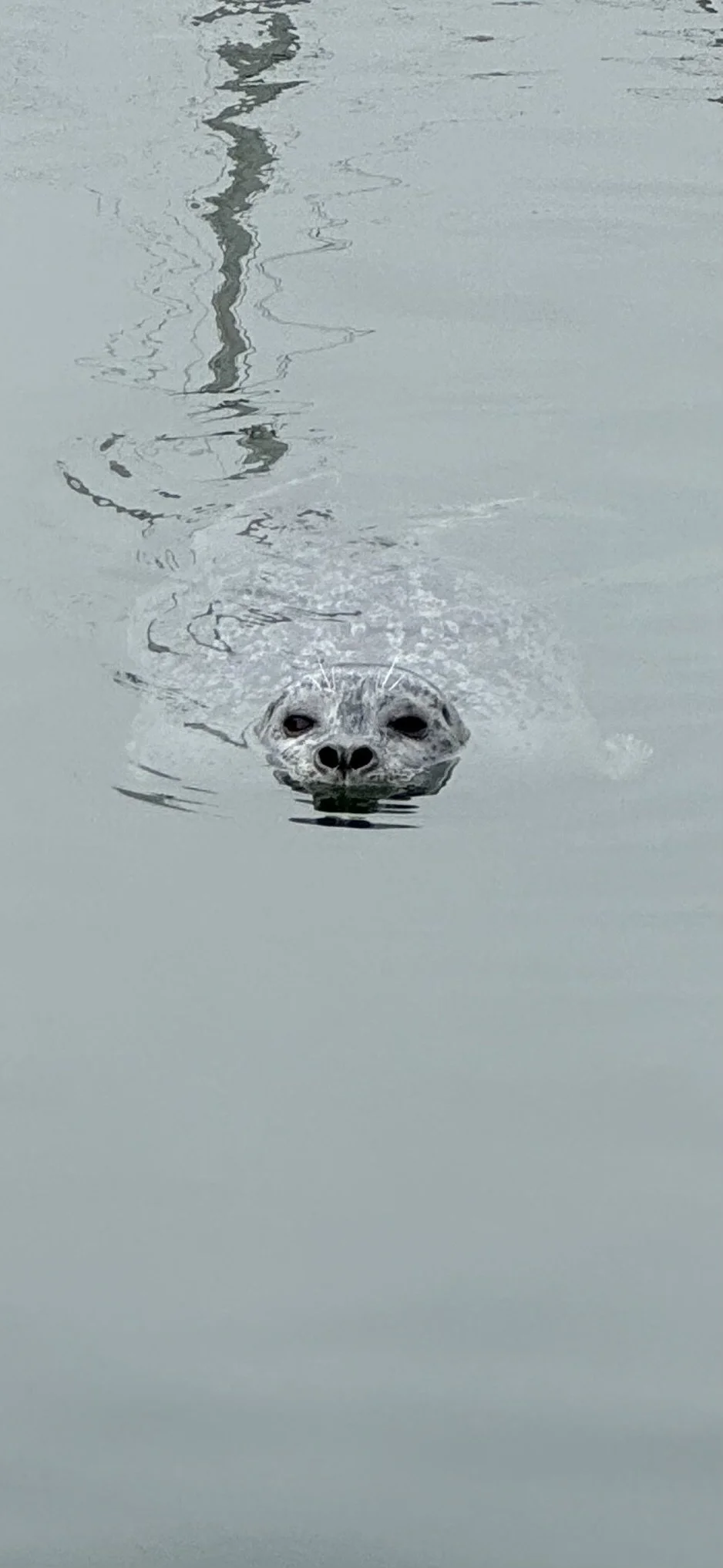When Sea Lions Steal the Catch: The Struggle Between Oregon Fishermen and Wildlife
The Columbia River Mouth—where the river meets the Pacific near Hammond, Astoria, and Warrenton—is one of Oregon’s most vital fishing hubs. But along with Chinook and Coho Salmon runs, the region has become a hotspot for a growing conflict: fishermen vs. sea lions.
Every year, sport and charter fishermen face a familiar struggle: gear loss, stolen catches, and boat harassment—not from other humans, but from California sea lions. In fact, when I worked for Oregon Department of Fish and Wildlife as a Port Sampler, it was the first issue brought up every time there was a bad experience on the water. And it’s more than a nuisance—it’s a problem with scientific weight behind it.
California Sea Lion, Unsplash (2025)
Sea Lions: Opportunistic Predators, Not Passive Observers
The California sea lion (Zalophus californianus) population has boomed from 90,000 in the 1970s to over 300,000today1. In the Columbia River estuary, these marine mammals have learned to: follow fishing boats into harbor, Steal salmon off lines or take the line until the fisherman snaps it, harass anglers and crowd fish ladders.
This behavior isn't just clever—it's disruptive.
Sea lions have few natural predators in the region. Transient orcas sometimes hunt them along the coast, but they’re rare visitors to the Columbia River. Sharks don’t enter the estuary. On land, they have no threats.
That means when sea lions push upriver, they’re effectively at the top of the food chain, which means they’re free to feed on salmon with little pushback from nature.
Chinook Salmon Under Pressure
According to NOAA, sea lions below Bonneville Dam consume up to 43% of the adult spring Chinook run2. Some individuals have been observed taking multiple salmon per day—many of which are listed under the Endangered Species Act (ESA).
Despite hatcheries, dam improvements, and fishing restrictions, predation by marine mammals is now one of the top threats to salmon survival in the Columbia Basin.
There are many people in Oregon concerned about this issue but if your livelihood isn’t on the water, it probably hasn’t crossed your path. There are entire counsels in Oregon dedicated to salmon in Oregon and the issues that salmon and fishermen face. See Oregon Salmon Commission here. And see ODFW Commission here.
(Harbor Seals Are Not the Same Problem)
Dock crews may lump them together, but harbor seals are a different story:
They weigh less.
Stick closer to shore.
Feed mostly on small fish or scraps.
Rarely interfere with active fishing lines.
They’re a mess around cleaning stations—but they’re not chasing your catch. In fact, comparatively they are ‘friendly’. They pop their head up a few times, observe and then go away if no bait or fish carcass is being dumped.
Personal Photo of a Harbor Seal off the Astoria, OR Docks (2024)
Human Habits Are Fueling the Fire
A major issue I saw while working for the Oregon Department of Fish and Wildlife (ODFW) was anglers dumping fish guts directly into the harbor. Usually it’s not allowed at most docks and fishermen are aware that it’s against dock rules. But it’s obvious when it’s not observed.
The result? Massive flocks of gulls. Seals and sea lions flocking to the docks. Increased aggression and habituation.
Conditioning wild animals to expect food near humans is dangerous—for both sides3.
Because sea lions are protected by the Marine Mammal Protection Act, most deterrents are off-limits. Recent federal changes allow for targeted removal of individual sea lions at critical choke points, but this doesn't help the average sport fisherman on the open water4.
Even when devices like pingers or air horns are used, sea lions quickly adapt.
What Fishermen and the Public Can Do
If you fish in the Columbia or care about salmon survival, here’s how you can help. Don’t dump fish waste in the harbor. Use proper disposal bins at the dock. Report aggressive sea lions to ODFW. Support balanced wildlife policy that includes predator management, take to the commissions and get involved. Share the science, not just the frustration.
When Man Meets Wild, Responsibility Matters
The Columbia River is a collision point between wild instincts and human activity. If we want to preserve fishing, salmon, and sea lions alike, we need smarter coexistence—backed by science, not just stories. Fishermen will tell you exactly how they want to handle the issue — and it’s not good for anyone. But ODFW will tell you that they have their hands tied — and they do. So where do we go from here? How do we handle Man v. Wild justly?
Want More Behind-the-Scenes from the Columbia River Docks?
🎣 Follow my ongoing stories, insights, and real-life reporting from the Oregon coast on Callahan Wildlife on Substack
You’ll get more deep dives into where man meets wild, straight from someone who’s been on the docks, boats, and cleanup crews.
Stay Wild,
Micah Callahan-McNeely
Founder, Callahan Wildlife
Micah Salmon Fishing in Columbia River, 2024
Sources:
NOAA Fisheries, California Sea Lion Stock Assessment Report (2021)
NOAA Technical Memorandum NMFS-NWFSC-137 (2017): "Evaluation of Pinniped Predation on Adult Salmonids and Other Fish in the Columbia River Basin"
Marine Mammal Science (2020): “Human-induced food conditioning in marine mammals: patterns, causes, and consequences.”
John D. Dingell Jr. Conservation, Management, and Recreation Act (2019), Section 302: Authorizing lethal removal of sea lions in certain areas of the Columbia River.


